Painting Solutions
A painting contractor shares advice to help you get professional results on your next interior paint job.
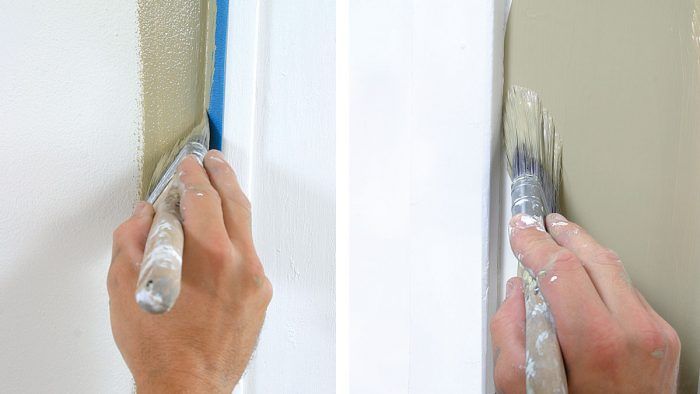
Synopsis: In this article a professional painting contractor answers the most frequently asked questions about interior painting. Among other topics, he covers prepping a room, covering stains, and painting windows and doors.
Most people think that painting the interior of a house is a job that requires just a couple of tools, a high level of boredom, and very little experience. Only after they’ve come to the end of their messy first job do they begin to wonder about that old guy in painter’s whites they once saw working at someone else’s house. How could he paint an entire room in a seamlessly choreographed sequence of brush and roller strokes before his second cup of coffee and not spill even a drop of paint? I’m not that old guy yet, but I am a painting contractor. People always ask me how they can improve their painting techniques. If you consider the act of painting on par with a trip to the dentist, the answers ahead will provide some Novocain to ease the pain of your next painting project.
How do I prep a room for paint?
I like to move all furniture out or to the center of the room and cover it with plastic. To protect the floor, I roll out 4-mil plastic and tape it to the baseboard. Unless I’m painting the ceiling, it’s necessary to cover only the first 3 ft. or 4 ft. of floor from the wall. Blue masking tape is best; it adheres to most surfaces and peels off cleanly for up to 14 days. The green tape can stay on even longer.
|
|
 |
Next, I make sure walls and trim surfaces are clean, stain-free, and smooth. Nail holes, bumps, and cracks can be patched; for anything less than 1 ⁄4 in. deep, I use lightweight joint compound, which dries quickly.
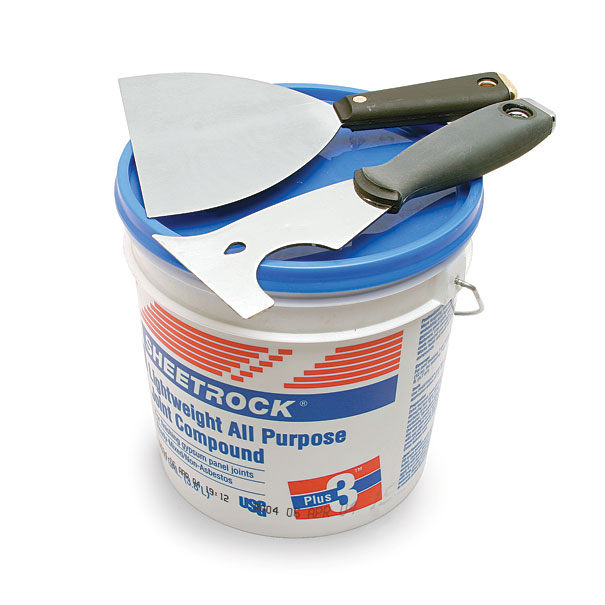 |
|
How do I prevent stains from showing through the new paint?
It’s a good idea to start any job with a quality primer. Stains including ink, crayon, water, and smoke soot can be blocked by a stain killing primer such as BIN or Benjamin Moore’s Fresh Start acrylic primer. After applying the primer, be sure to spot-prime the same area with the finish paint before applying the final coat. Otherwise, the spot will appear shiny when the wall is viewed from an angle.
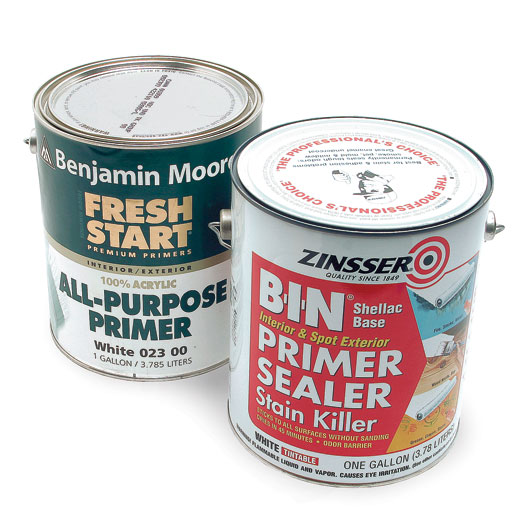 |
|
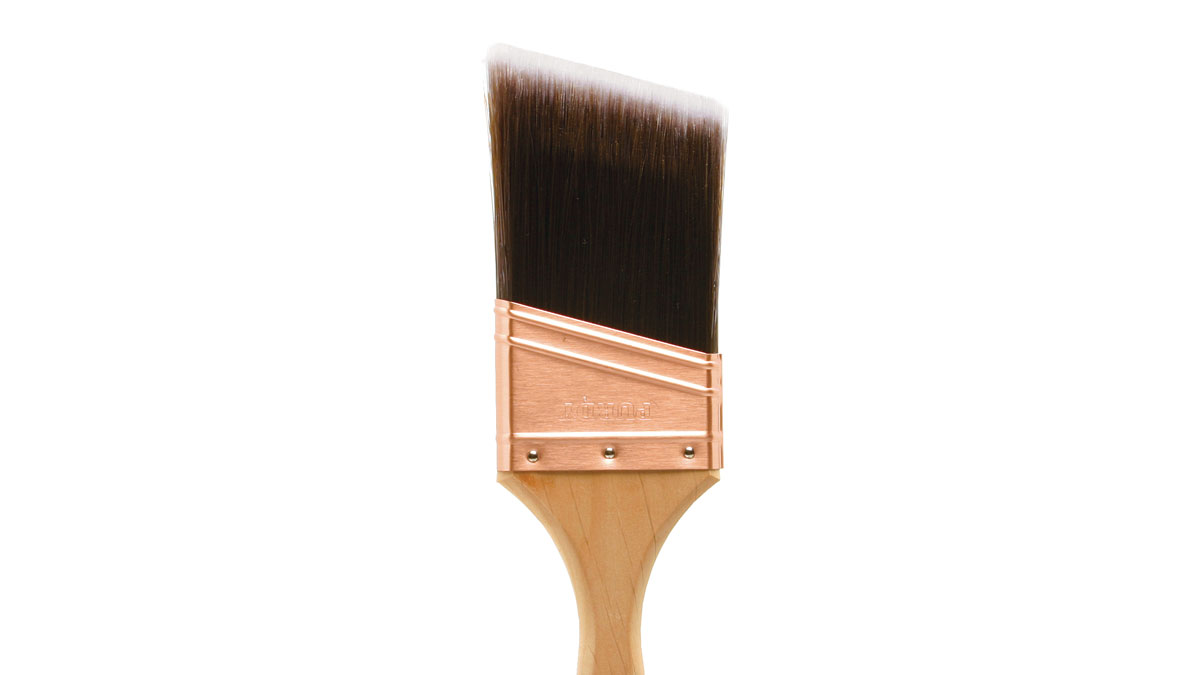
Which type of paint is best?
For a topcoat, there are two things to consider: latex vs. oil, and type of finish. Oil paint is made with an alkyd-base resin and cleans up with mineral spirits. I use it in kitchens and bathrooms because it is impervious to water. Latex paint is made from acrylic resins and cleans up with water. Because of their good durability and easy cleanup, I use latex paints everywhere else.
|
|
|
|
|
|
What do I paint first?
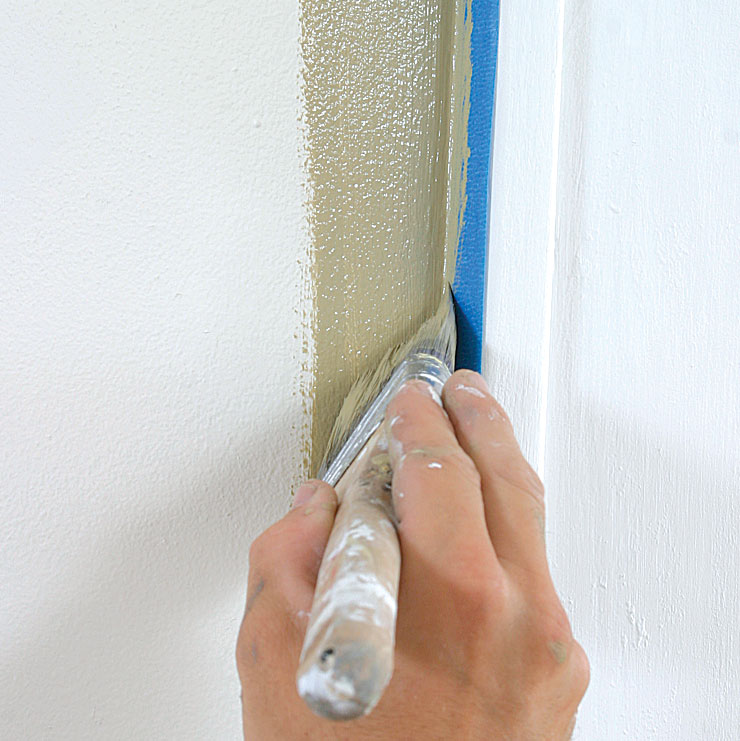
Pro painters have different preferences, but I like to paint the walls first, then the trim. I can roll out the walls quickly and not worry about any spray landing on the trim. Once the walls are finished, I wipe down the trim with a damp rag and start on it. I don’t mask off the trim when I cut in the walls, but masking is certainly a good option if you’d rather not worry about getting wall paint on the trim. Any one of the low-tack tapes works well.
Lap marks on walls are the visible transition between the textures made by a brush and by a roller. I cut in with a brush first, then try to roll as close to the trim as possible. I switch between cutting and rolling to ensure that the cutting stays wet, which also helps to eliminate marks. You’ll also find that the greater the paint’s sheen, the greater the likelihood of lap marks, which is a big reason to use flat paint on walls.
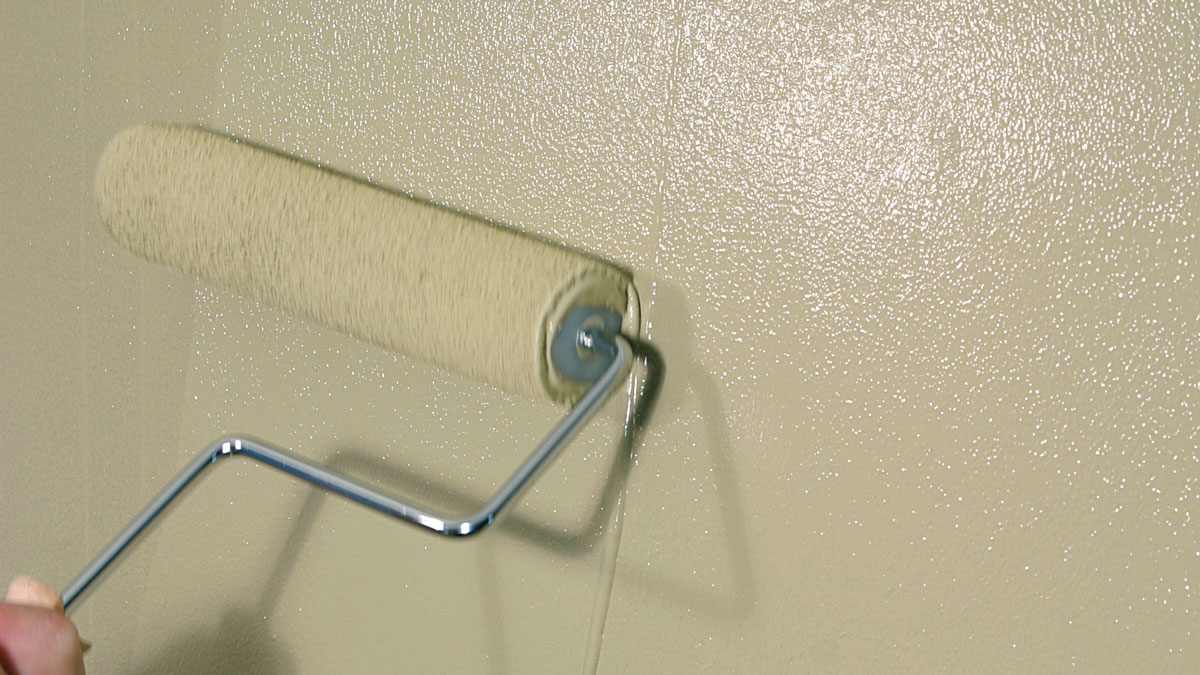
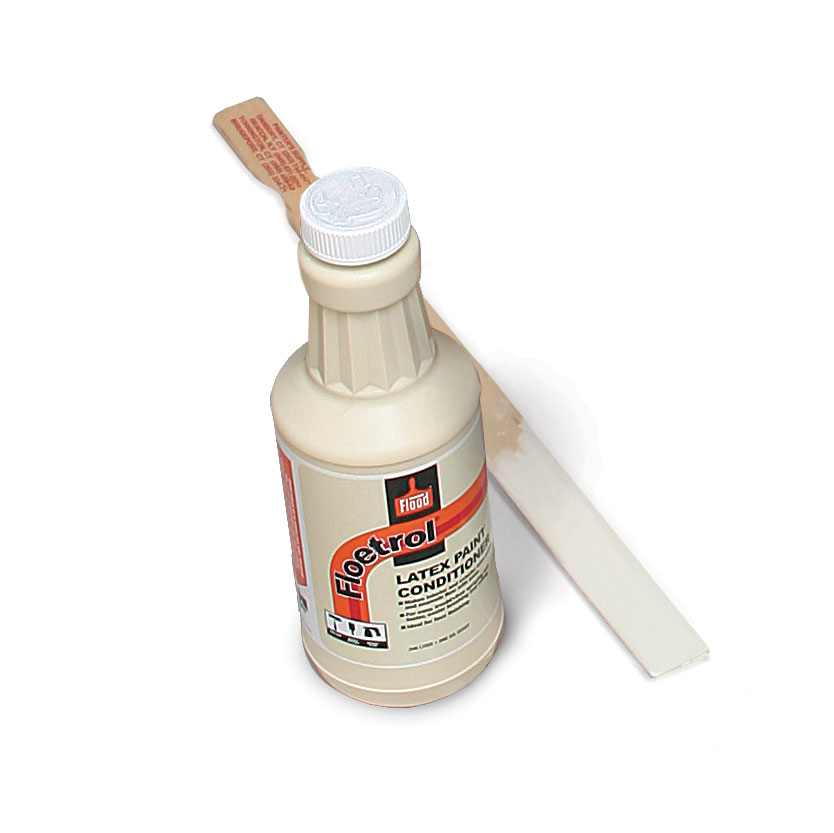
When rolling out a wall, how can I avoid lap masks and ropes?
Ropes, another type of lap mark, are caused by squeezeout from the roller’s edge and can be remedied by a lighter touch when rolling out a wall. After loading the roller with paint, I use short, easy strokes that overlap each other by at least half.
What’s the trick to painting a window?
I paint the muntins of the window first, then move to the face of the window. With a 21 ⁄2-in. sash brush, I angle the brush’s tip into the muntin’s edge and draw the paint along the muntin with one smooth stroke. (If you’re unsure of your technique or don’t want to bother, you can mask the glass with blue tape or scrape the glass once the paint has dried.) Don’t apply too much paint to the window frame; also, open and close the window during the drying period so that it doesn’t dry shut. If the window is painted shut, carefully run a razor blade between the window frame and casing to break the seal.
|
|
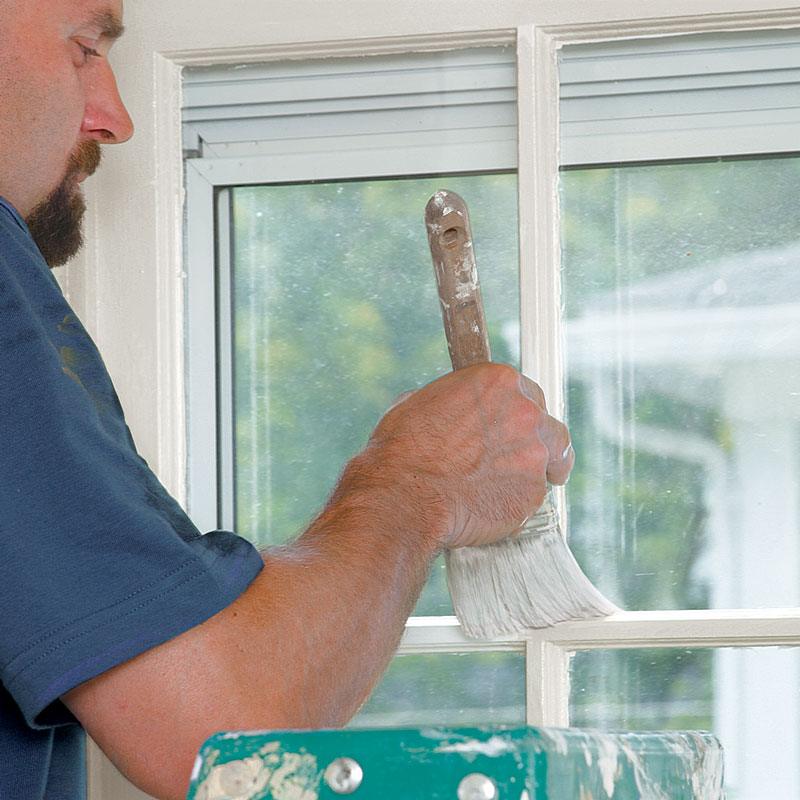 |
 How do I paint a paneled door and not get lap masks?
How do I paint a paneled door and not get lap masks?
Paneled doors should be primed with a highquality primer to eliminate bleed-through stains. Multiple finish coats (usually two) may be necessary to get good coverage. Ask your paint supplier to tint the color of the primer as close as possible to the color of the finalcoat paint. Again, the secret to stopping lap marks is to use a smooth last stroke with little paint and light pressure.
1. Start by painting at the top of the door, panels first, then rails, then stiles. Here, less paint is better to prevent drips; two coats lightly applied are better than than one heavy coat that drips or sags.
2. Be sure to keep the paint’s leading edge wet to prevent brush marks. A final light stroke across the panel faces and along the intersections of the rails and stiles will eliminate sags and brush marks.
3. When you reach the door knob, use even less paint to get a seamless stroke pattern. The trick is to brush around the knob with continuous strokes and avoid stops. Masking or removing the hardware is also an option.
4. Be sure to check your work for drips, particularly in recessed areas and along door edges. As long as the paint is still fairly wet, drips can be erased with a light brush stroke
What about cleaning up latex paint?
First, I flood the bristles with water, working out the majority of the paint. I use a wire brush gently to scrape out all remnants of dried paint. If not cleaned thoroughly, the brush will lose its flexibility. I use a little dish soap to remove the traces of oils that are in latex paint, rinse again, then shake or spin the brush dry.
Rollers are certainly worth cleaning. If washed thoroughly, they can be used repeatedly. Scrape excess paint out of them with a 5-in-1 tool, then wash them using the same principle as the brushes, without the wire brush, of course.
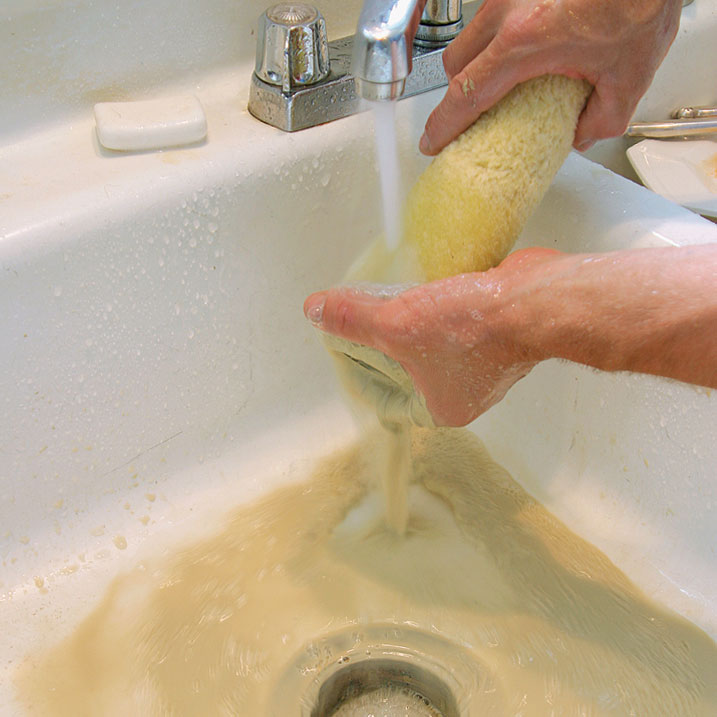 |
For more photos and details on painting solutions, click the View PDF button below.
From Fine Homebuilding #166
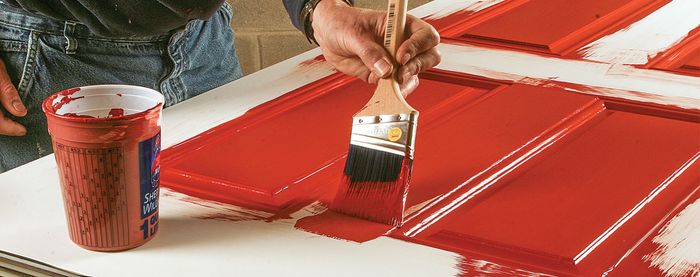
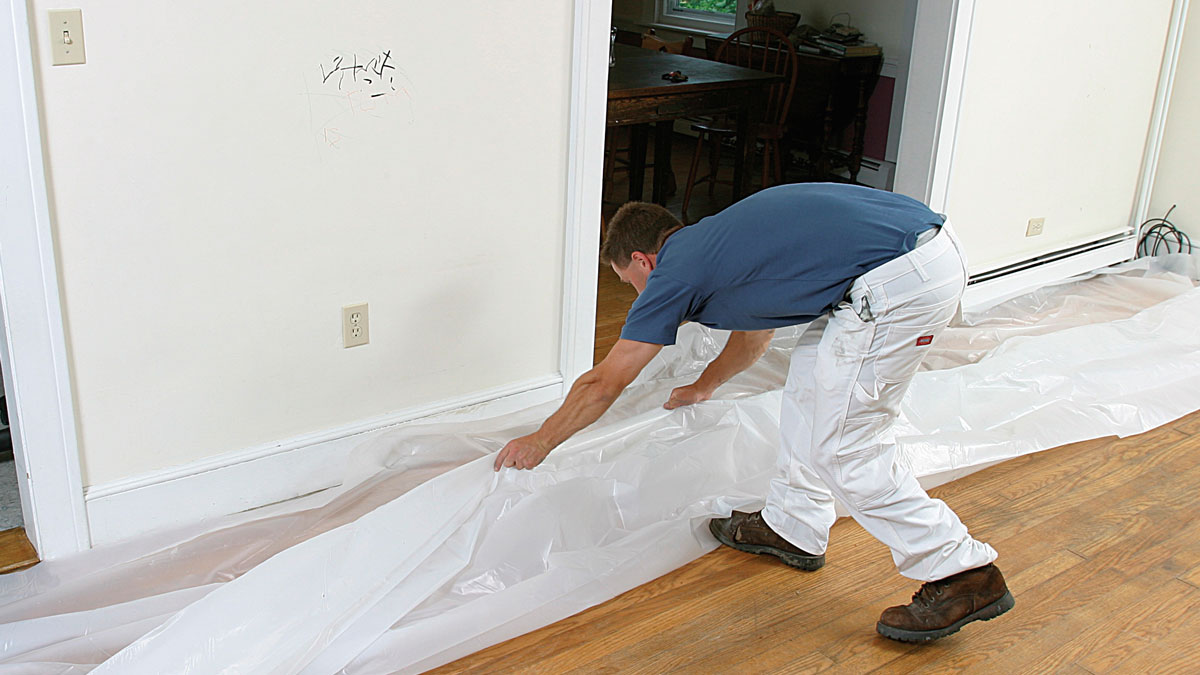
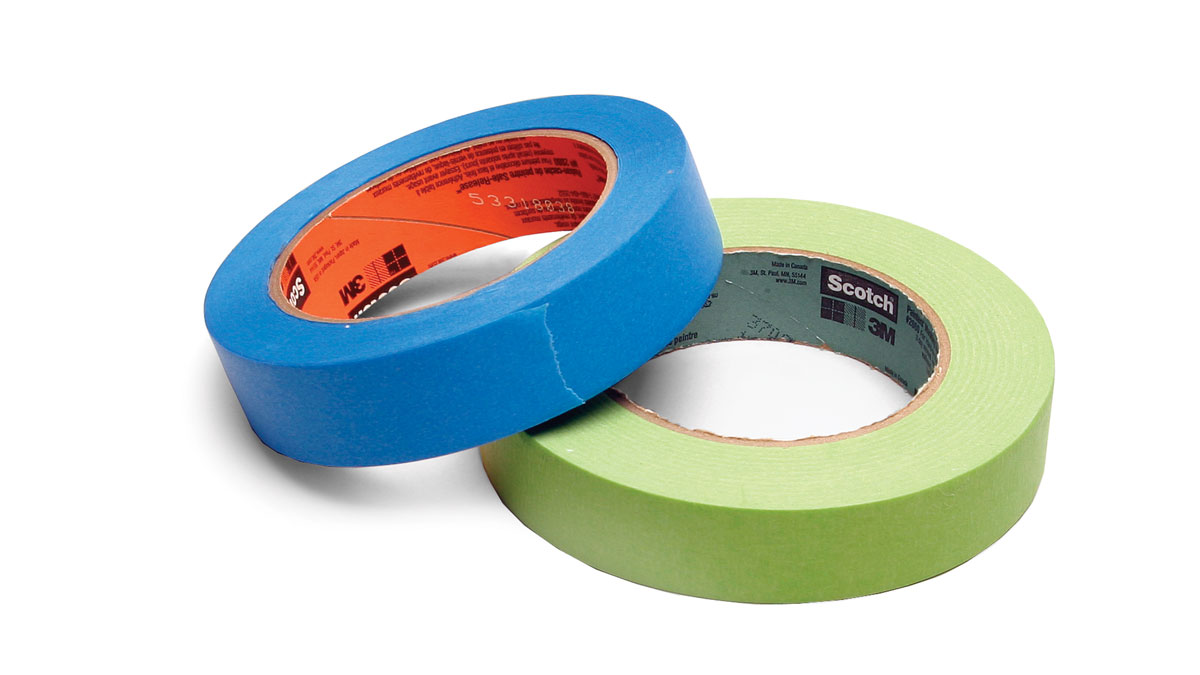
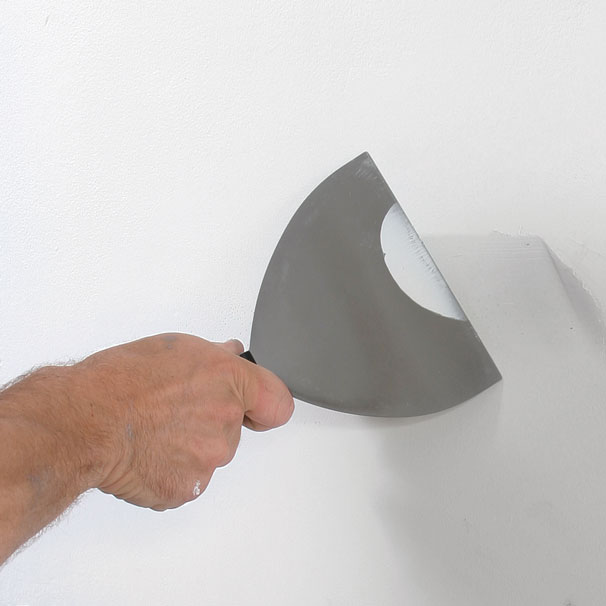
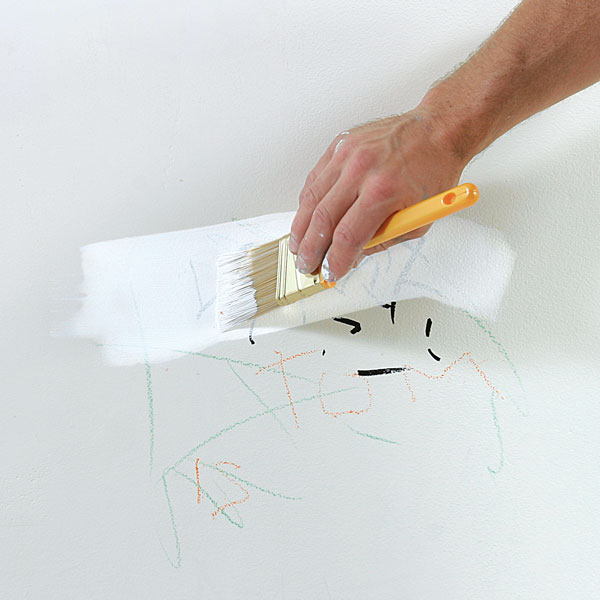
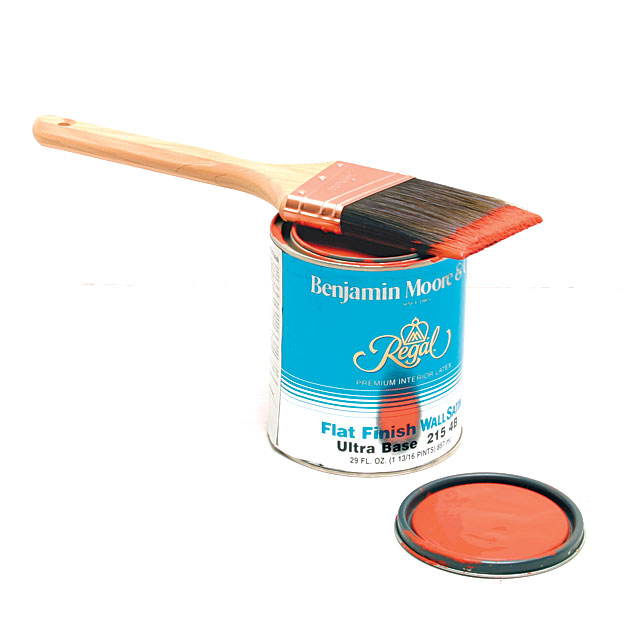
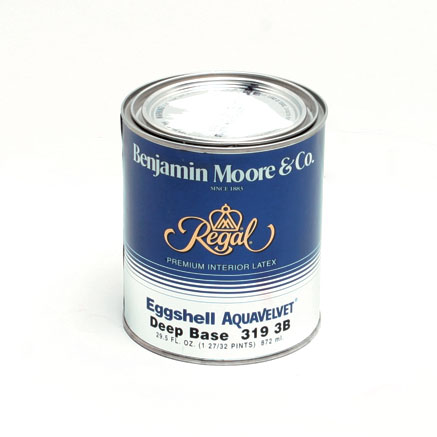
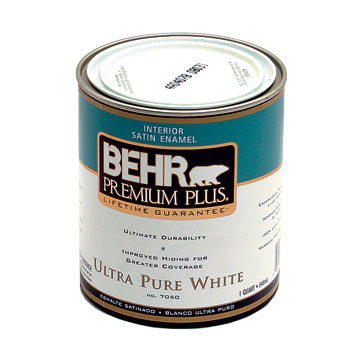
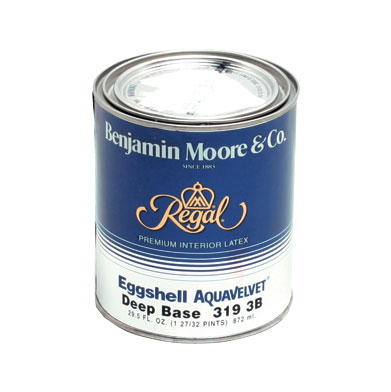
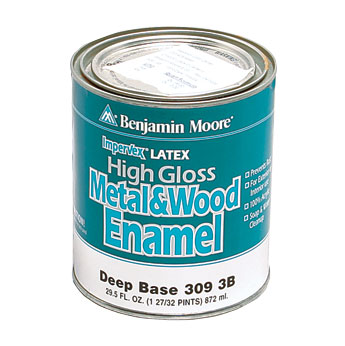
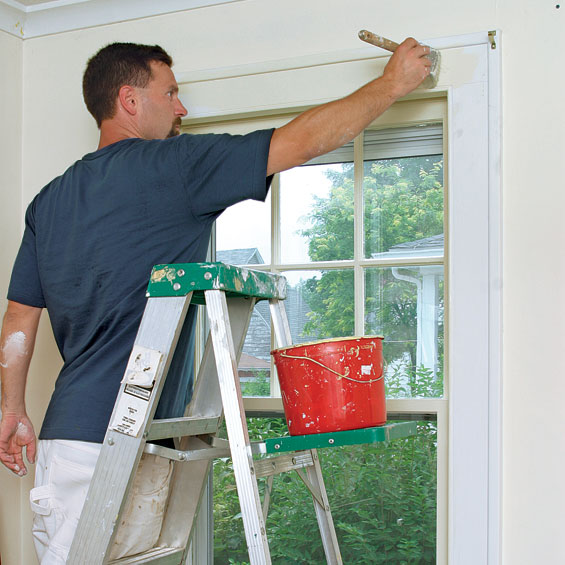

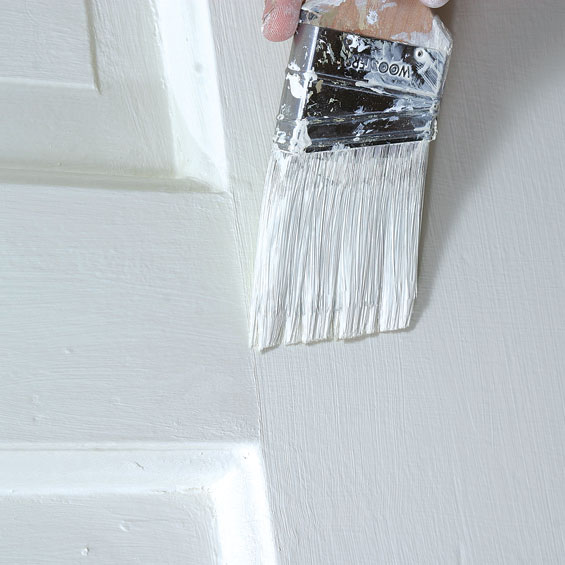
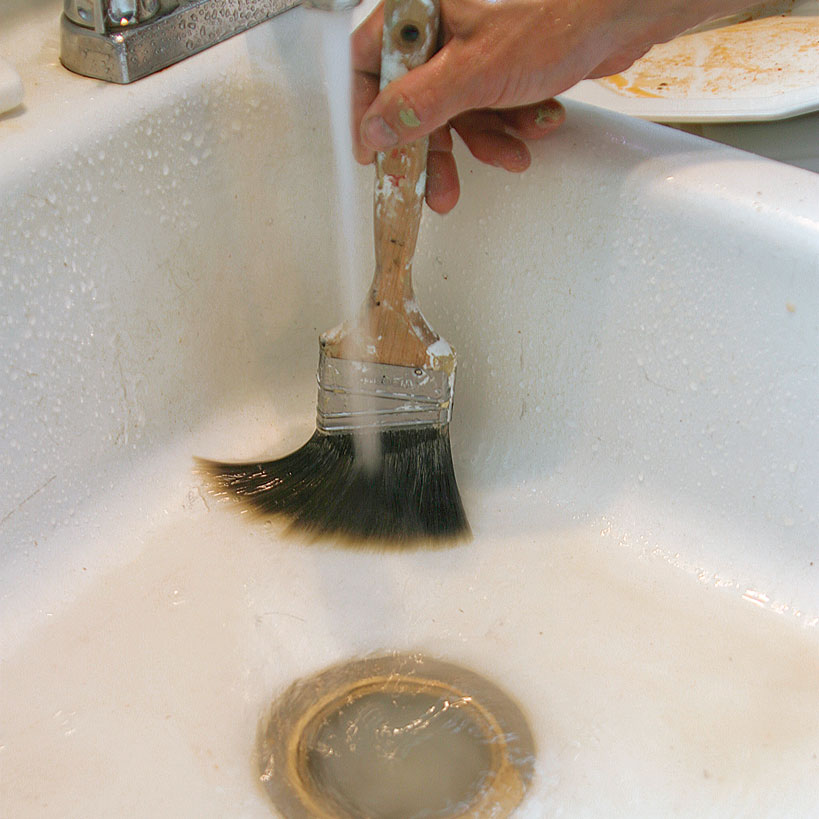




View Comments
Brian Doherty's article in this same eLetter is how a true professional paints interior woodwork.
Page 5. Frank can't even be bothered removing the hardware from the door and properly sanding the built-up coats of paint around the hardware, from previous hack jobs. Secondly, the accompanying picture is NOT how one paints a door.
The correct method is to paint all panels going with the direction of the wood grain/moulding. Then paint the stiles in the middle of the door, overlapping the rails slightly. Then all the rails, carefully removing brush marks from having painted the middle stiles, with a "sweep through" action. Finally, the outside stiles, from top to bottom, "sweeping through" brush strokes from the horizontal rails. In this manner brush marks will be in the direction of the grain of the wood with a proper transition between rail and stile.
Lightly tipping-off the painted work to remove heavy brush strokes seems to get only passing mention, even though it is extremely important with fast drying latex paints that don't have time to level.